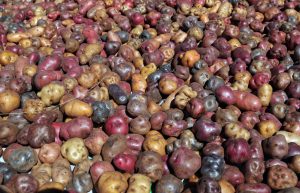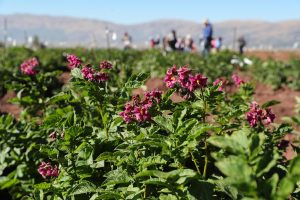
Cuzco, Peru, Jun 6 (EFE).- Largely unknown outside of the Andes, the region’s many multi-colored potato species may aid in preventing malnourishment and cancer, Peruvian researchers told EFE on Wednesday.
In their facility in Zurite, in the Andean region of Cuzco, scientists with Peru’s National Institute for Agrarian Innovation (INIA) are doing research on the myriad native potato varieties growing on mountainside terraces built by ancient Peruvian civilizations some 3,400 meters (11,200 feet) above sea level.
Their goal is to study the characteristics and benefits of each of the many potato breeds cultivated by the ancient Incas and classify them, as well as to develop new varieties that can be grown on a larger scale.
“To us, it’s a privileged place, as it has a history of more than 3,000 years of development,” INIA researcher Ladislao Palomino told EFE.

“It was built by Pre-Incan civilizations, who left us a very important legacy, setting the bar very high, but I think we can surpass it.”
INIA has obtained as many as 26 new potato breeds that possess the characteristics of their native counterparts, including resilience to climate change – due to their high phenol content – and a more appealing shape and size, as well as their “high amounts of calories and proteins.”
“We don’t feel we’re developing a food that just fills the stomach,” Palomino said of the potatoes, the colors of which range from purple and black to red and orange. “(Potatoes) also protect against degenerative illnesses, such as cancer, because of the antioxidants they contain.”
INIA is currently exploring the commercial possibilities the potato has to offer.
